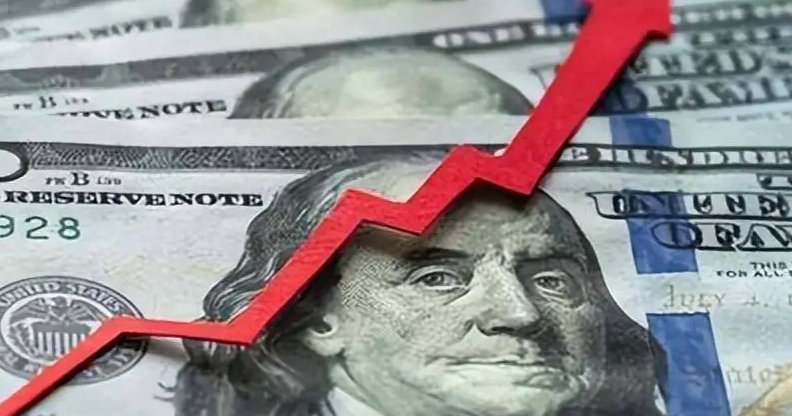US Economy Faces Another Setback!
Advertisements
The approach of the Federal Reserve's meeting day has steadily increased global attention toward the United States. In recent discussions, there is a prevailing sentiment that a modest interest rate cut of 25 basis points may not sufficiently stimulate the ailing American economy. Many experts now advocate for a more significant reduction, suggesting that a 50 basis point cut might be necessary to provide a compelling stimulus to the faltering economic landscape.
As we analyze the economic data released in August, it becomes evident that these shifts in expectation are not unfounded. The U.S. economy is exhibiting signs of sluggishness, leading to a notable depreciation of the dollar and raising the possibility of the yuan strengthening against the dollar, potentially reaching 7.0 if the current trends continue. This influx of data is not just impacting the U.S. economy but is influencing global markets and currency exchanges extensively.
The perceived requirement for a steeper rate cut stems from the palpable decline in U.S. economic performance. A report released last night, referencing the ADP employment figures often dubbed the "little non-farm payroll," has brought this situation into sharper focus by outlining troubling trends in employment growth. The employment figures reveal a stark increase of only 99,000 jobs in August, the lowest recorded since January 2021, falling significantly short of expectations which had anticipated an increase of 145,000 jobs, further compounded by the previous month's figure of 122,000.
In parallel, July's Job Openings and Labor Turnover Survey (JOLTS) pointed to an unexpected drop in job vacancies, sliding to their lowest level since early 2021 and well below the anticipated 8.1 million openings. Collectively, these figures portray an alarming picture of the U.S. labor market entering a steep decline, with employment conditions reflecting a broader economic malaise. A flourishing job market typically signals a robust economy where sectors thrive, whereas rising unemployment is indicative of contraction across various industries.
In hindsight, these warning signs have not emerged overnight; earlier non-farm payroll data had already hinted at a weakening employment sector. Despite occasional positive reports, much of the bright spots in employment statistics were attributed to methodological discrepancies. Furthermore, the Department of Labor's acknowledgment of flaws in its employment statistics for 2023—resulting in a downward revision of over 800,000 jobs—adds credence to the argument that the employment landscape is fraught with challenges.
Consequently, the specter of a deteriorating economy casts a long shadow over expectations for the Fed's anticipated 25 basis point cut. Many investment firms, including Citigroup and JPMorgan Chase, are pivoting towards forecasts of a more aggressive rate reduction of 50 basis points. The rising anticipation of additional rate cuts signals the market's deepening fear of an impending recession. One of the widely recognized indicators of an economic downturn is an inversion of bond yields, which is precisely what we are witnessing with the two-year and ten-year Treasury yields crossing paths.

Simultaneously, the international currency markets have exhibited volatility, which has aided the Chinese yuan in reaching its highest exchange rate against the dollar since May of last year. The yuan's appreciation in recent months is closely tied to the schisms developing within the American stock market, wherein investor sentiment gravely reflects concerns regarding the U.S. economy’s trajectory. A depreciating dollar indirectly fosters the yuan's recent gains, culminating in a dual phenomenon of currency appreciation alongside enhanced international standing for the yuan itself. Notably, the proportion of the yuan in global payments surged to 4.74% in July, its highest level on record, and the Global Yuan Index has continued to rise for five consecutive months, marking a period of significant achievement for the currency.
Regardless of the direction that the U.S. economy takes, its future trajectory has already begun to reverberate across multiple sectors. A pertinent question arises: will the yuan continue in its upward trend? The likelihood appears favorable. If the Federal Reserve moves towards interest rate cuts and the dollar weakens further, the yuan's continued appreciation stands to be bolstered by increased currency settlements, which could magnify its upward slope.
A stable and controlled appreciation of the yuan could potentially attract a wave of foreign investments. In terms of valuation compared to the U.S., China currently offers compelling propositions that heighten its appeal, especially as American assets have come under selling pressure. High-profile investors such as Warren Buffett and NVIDIA's Jensen Huang have been liquidating their holdings in the U.S. stock market. Whether their motivations arise from portfolio realignment or a strategic move influenced by shifting economic conditions, the overarching takeaway is clear: the allure of American assets is waning.
Market sentiment continues to oscillate regarding the Fed's rate decision, with the probability of a 50 basis point cut climbing from 30% to 45%. This gradual rise encapsulates the growing concern within financial institutions about the uncertainties and risks underpinning the U.S. economy. Some may argue that the recent ADP report is subpar compared to the comprehensive non-farm payroll statistics; however, we must also contextualize these figures against continually dire signals emanating from the latest manufacturing and services PMI data that foreshadow recession and stagnation risks.
As we anticipate the upcoming non-farm payroll report, it is increasingly clear that the developments regarding the Fed's rate cutting strategy hinge upon these metrics. Should the figures reflect continued economic contraction, the path forward for the Federal Reserve will undoubtedly take on heightened significance as we seek clarity amidst the uncertainty. The outcome of the impending non-farm payroll release will likely provide crucial insights into the economic climate, directly influencing the Fed's future monetary policy decisions.
Leave a Reply